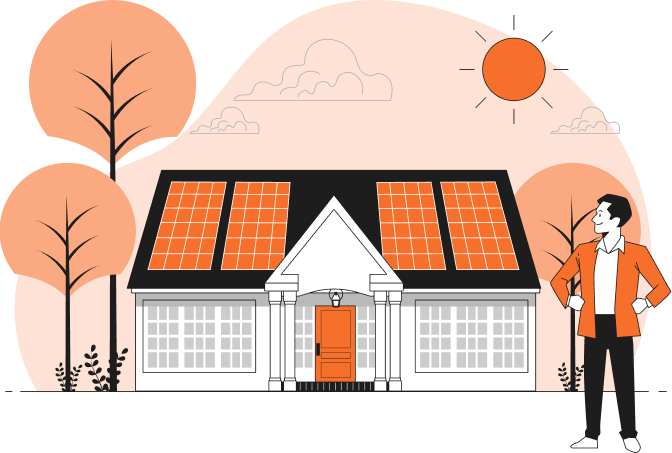Buy to Let Mortgages Guide for Investors
Revolution Brokers team compiles all the essential information you need to apply for a buy to let mortgage - whether you're a first-time landlord or want to refresh your knowledge.


Buy to Let Mortgages Guide for Investors
Buy to let property investments can be a great way to achieve a steady return, but applying for a rental mortgage can be complex if you're new to the sector.
In this guide, the Revolution Brokers team compiles all the essential information you need to apply for a buy to let mortgage - whether you're a first-time landlord or want to refresh your knowledge.
Here we'll discuss eligibility criteria, the ins and outs of owning rental assets, and what to expect when applying for a buy to let mortgage.
Please call us for more advice on any topics discussed here at 0330 304 3040, or drop an email to the friendly Revolution team to arrange a good time to talk.
Understanding the Buy to Let Mortgage Process
Before we start discussing buy to let mortgage rates and costs, let's run through a summary of what this borrowing product is for.
You can apply for a buy to let mortgage against any property that you're letting out to tenants for a profit.
Most buy-to-let loans are interest-only, so you use the rental income each month to pay the interest and either sell the property or remortgage at the end of the term.
There are thousands of buy to let properties, from city centre apartments to family homes, rural buildings to listed properties, so it can be difficult to know which lender to apply to.
Property or loan details
Based on your details, you can borrow up to:
£0This calculator is an estimation of how much you could borrow. If you’re ready to take out a mortgage, speak to a Revolution brokers to see what options are available.
Borrowing Limits on Buy to Let Loans
Buy to let mortgages are relatively flexible, so provided you can prove that the rental income will more than cover the interest cost, there isn't any generic cap on the maximum mortgage you can apply for.
Of course, lenders will look at many other circumstances before offering to lend, but rental income is the primary factor, provided you meet all the requirements.
Most buy to let lenders will need to see that the projected rental earnings are at least 25% or 30% higher than the monthly interest, as a bare minimum.
Advantages to Taking Out a Buy to Let Mortgage
So, if you're thinking about taking on a buy to let mortgage, let's look at some of the pros and cons you should be aware of.
Rental property investment does have advantages and drawbacks, so we've summarised them here.
- • Long-term returns - if you have a great buy to let property that commands good returns, you can earn a stable, ongoing profit each month. Properties also tend to appreciate so that you can sell your asset in the future. • Strong earning potential - demand in the rental market is solid, and therefore investing in quality property can be a low-risk opportunity. • Tax incentives - while there have been several changes in the last few years that limit your allowable expenses, there are also lots of running costs you can deduct from your declared rental income.
Potential Pitfalls to Be Aware
Tenant-related risks are the most significant possible downside. That could include vacant periods between tenants, late rent payments or even arrears.
You'll also pay higher Stamp Duty if you're buying a rental property as a second home (there is a 3% additional levy) and the potential that your investment property will drop in value, as with any home purchase.
However, working with a broker is a great way to sidestep potential issues.
For example, Revolution Brokers can suggest insurance policies to protect you from tenant-related issues and negotiate lower interest costs to maximise profit.
Eligibility Criteria for the Best Buy to Let Mortgages
Just like a residential mortgage, your buy to let mortgage application will be subject to lender assessments, and every provider has varying rules and eligibility requirements.
Minimum Deposits on Buy to Let Mortgages
Deposits tend to be 20-25% of the property value, with standard buy to let mortgages offered at 75% to 80% Loan to Value (LTV). You usually need a larger deposit for a buy to let investment than if you're purchasing a home to live in.
There are options if you have a lower deposit, with a select number of providers accepting deposits as low as 15% if the circumstances are right.
Income Eligibility for a Buy to Let Loan
Lenders will primarily consider the rental income, but they'll also want to know if you have a separate salary or employment.
Particularly for new landlords, a mortgage provider might require an annual income of £25,000 from other earning streams.
However, Revolution Finance Brokers works with buy to let mortgage lenders who don't have a personal income requirement and base their lending decisions solely on the rental earnings.
Other Buy to Let Mortgage Criteria
Depending on your lender, they might also look at other factors, such as:
- • Age: some lenders will lend from age 21 to 75, but others have no limits or specialise in later life mortgages. • Property type: any non-standard property, such as a high rise flat, listed building, or unusual construction, will typically need a niche lender. • Experience: lenders can require a minimum number of years of landlord experience to grant a buy to let mortgage, but this isn't a universal criterion.
Another common requirement is that you already have a residential mortgage. Lenders like to see buy to let applicants with a mortgage of at least six months.
Typical Buy to Let Mortgage Rates and Costs
Buy to let mortgage rates vary since it's an unregulated market (visit our FAQs below to learn more about this!).
Therefore, it's all but impossible to give standard interest rates since that depends heavily on the property, your income, anticipated rental earnings, credit scoring, age, and various other circumstances.
However, we can illustrate the likely additional costs that go hand in hand with a mortgage.
It's crucial to have complete oversight of all the fees, as these are often forgotten until the mortgage comes to complete and can add a substantial amount to your budget.
Buy to Let Application Costs
Some buy to let mortgages carry zero upfront fees, but many do have an application or a booking charge, often around £500.
We strongly recommend working with a broker before applying for a mortgage and paying a booking fee since if you are rejected, it's doubtful you'll get that back.
Valuation Charges
There are very few reasons why a new mortgage won't need a valuation, but the exact cost will depend on the property's location, type, and nature.
Some buy to let lenders include a free basic valuation in their application charge. Still, it remains vital to carry out a complete structural survey to ensure that your investment property doesn't have any severe underlying issues.
Buy to Let Mortgage Product Fees
Product fees vary between product types. You might find that if you need a more extensive buy to let mortgage, it is far cheaper to take out a mortgage with no fee, or a fixed price, than one with a product charge based on a percentage of the loan value.
Exit Charges
Exit charges also vary, and you can be obliged to pay exit charges if you remortgage or repay your loan at any stage, even if it's well past any fixed term.
Early Repayment Charges are a type of exit charge, but slightly different since they only become payable if you want to close the account before a fixed period has ended.
Legal Buy to Let Mortgage Costs
You'll need to cover solicitors’ charges for the legal paperwork required when purchasing a property.
Costs vary, with some solicitors working on a fixed rate and others charging per hour or per day. It's less usual these days for solicitors to charge a percentage of the value, but possible.
Some mortgage lenders will offer free legals to incentivise buy to let borrowers to take up a deal.
Stamp Duty on Investment Properties
Stamp Duty rates change and will vary depending on the value of the property you're buying and whether it's a first-time purchase.
Rates range from 3% to 15%, so it's wise to check the current rates, as you will be liable for a second home additional charge if you already own property on top of the applicable band.
Ongoing Costs to Maintain a Rental Property
The other costs involved with mortgaging a buy to let property involve property maintenance and letting agent fees.
Most letting agents will charge either a fixed rate or a percentage of the rental income, often around 10% per month.
It's often worth using a letting agent if you don't have the time or experience to run background checks and credit reports on tenants, as they'll often have ample experience managing tenancies in the local area.
Calculating Rental Returns on the Best Buy to Let Mortgage Rates
Even if you're confident your buy to let mortgage rate is an incredible deal, it's imperative you check what your rental returns are likely to be, based on the anticipated income.
Your rental return is the difference between the rent you earn each month and the interest you need to pay on your mortgage.
For example, if you pay £1,000 a month on your buy to let mortgage and receive the rent of £1,100, you’re making a 110% rental return.
Lenders would consider that illustration too low for most mortgage products - they'll want to see a return of 125% as a minimum, assuming you're on a standard income tax rate.
Returns are also critical since a lender will stress test the application before approval. That means recalculating the monthly interest costs using a nominal interest rate (often 5.5%) to check you'd still be able to afford the mortgage if interest rates increased.
Further Reading
-
Financing a Buy-to-Let HMO and UK Licensing Rules
-
LTD Company Property Finance
-
Property Refurbishment Finance
-
Buy To Let Mortgages for Expats
-
Buy To Let Refurbishment Mortgages
-
Portfolio Landlord Mortgages
-
Buy to Let Interest-Only Mortgages
-
Changing Your Mortgage to Buy to Let
-
Mortgages for Buy to Sell Investments
-
Company Mortgages for SPVs
-
Stamp Duty for Buy to Let
-
Repayment Mortgage for Buy to Let
-
Buy To Let Mortgages For New Builds
-
Buy To Let Mortgages For Retiree Landlords
-
Buy To Let Mortgage With Poor Credit
-
Securing BTL Mortgage Quotes & BTL Agreement
-
BTL UK Portfolio Mortgages
-
Best Buy to Let Mortgages: 75% LTV
-
Buy to let 80% LTV Mortgages
-
Holiday Let Mortgages
-
Buy to Let Remortgage
-
Buy to Let Mortgages Guide for Investors
-
Let to Buy
-
Applying for a Buy-to-Let Mortgage Without a Minimum Income
Explore Our Presence
Securing an excellent mortgage offer with Revolution Finance
Brokers couldn't be easier:
Revolution Mortgage Brokers:
100% Independent & Whole-of-Market
As specialist mortgage brokers for a huge variety of applicants, the whole-of-market consultants at Revolution provide access to an exceptional range of lenders, products and mortgage deals. That means you get the advantage of professional negotiation and broker-exclusives through an established lending network to ensure we always find you the most competitive mortgage available.
Ask the Expert
Mortgage Brokers


























